By preserving its rare natural resource and traditional processing techniques, the Trà [Tea] Pèng Cooperative has taken steps to protect and promote the region’s cultural and ecological heritage, extending the reach of Shan Tuyết tea beyond its mountainous origins.
Nestled at the foot of the Tây Côn Lĩnh mountain range, Xà Phìn Village – part of the border commune of Thanh Thủy in Tuyên Quang Province – hosts over 100 hectares of centuries-old Shan Tuyết tea trees, regarded by the local Dao ethnic community as cultural treasures.
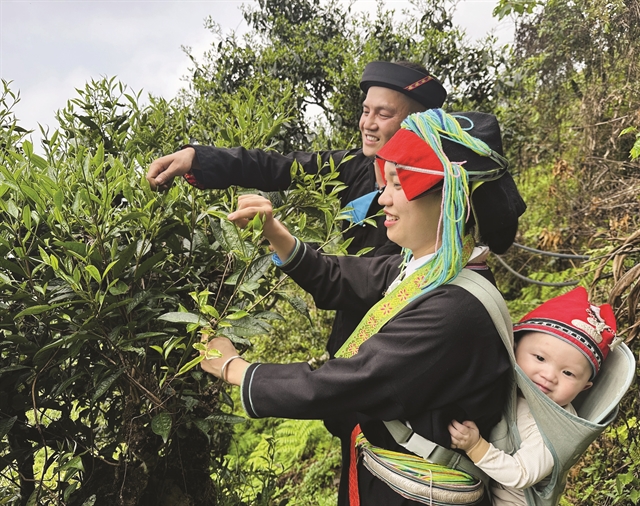
A Dao couple pick tea on the Tây Côn Lĩnh mountain, with their child nestled on the mother’s back. VNA/VNS Photos Đức Thọ
By preserving this rare natural resource and its traditional processing techniques, the Trà [Tea] Pèng Cooperative has taken steps to protect and promote the region’s cultural and ecological heritage, extending the reach of Shan Tuyết tea beyond its mountainous origins.
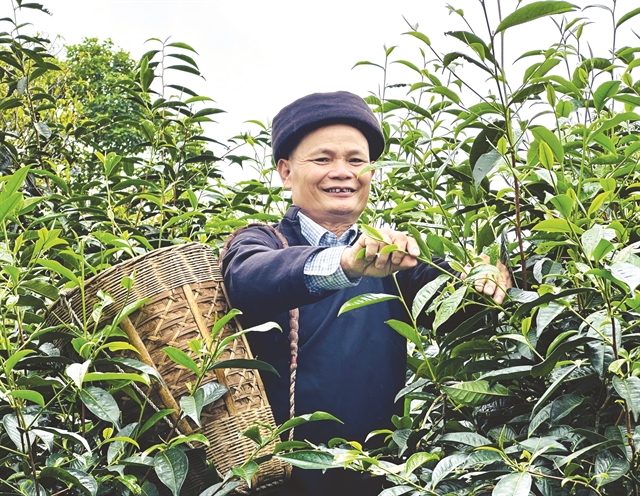
Đặng Văn Háu, director of the Trà Pèng Cooperative, joins fellow villagers in harvesting tea leaves.
According to Đặng Văn Háu, director of the Trà Pèng Cooperative, the tea trees have been here since their ancestors’ time. "Hundreds of years ago, our people were already harvesting buds and pan-firing tea over wood stoves. Generation after generation, Shan Tuyết tea has become inseparable from the lives of the Dao people in Xà Phìn,” Háu said.
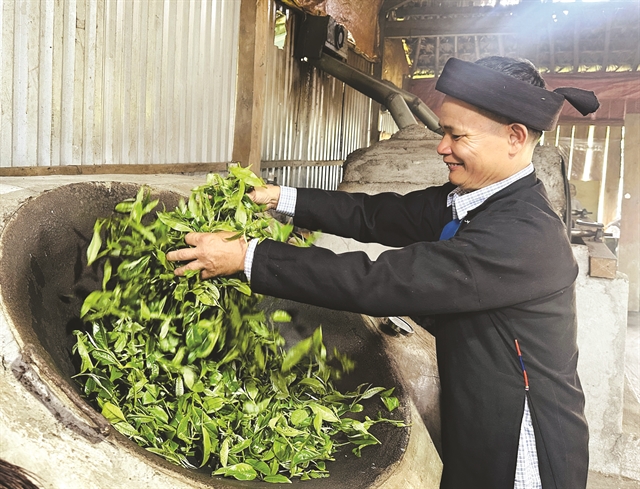
Đặng Văn Háu skillfully performs the traditional hand pan-firing process, an essential step in crafting high-quality tea.
The village comprises 54 households with 270 residents, all of Dao ethnicity. Shan Tuyết tea serves not only as the primary source of income but also as a meaningful cultural emblem.
From early morning, while dew still coats the leaves, skilled hands begin selecting tender tea buds. As daylight grows, the fresh leaves are brought back to the village for traditional processing.
Men light the fires, while women prepare cast-iron pans. The withering stage – using charcoal or natural airflow – reduces moisture and helps retain the tea’s distinctive aroma.
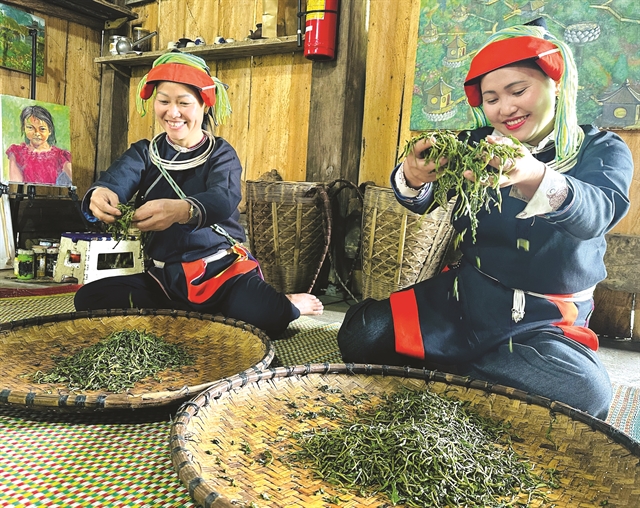
Dao women in Xà Phìn Village hand-roll tea leaves as part of a traditional processing technique.
“The most critical step is pan-firing,” Háu explained. “It requires dexterity, experience, and attention to detail. The tea master must carefully manage the heat, listening for the sizzle and sensing the aroma to determine when the batch is ready. Afterwards, the tea is rolled, dried, and vacuum-sealed. Each stage reflects the care, patience, and inherited knowledge of the Dao people.”
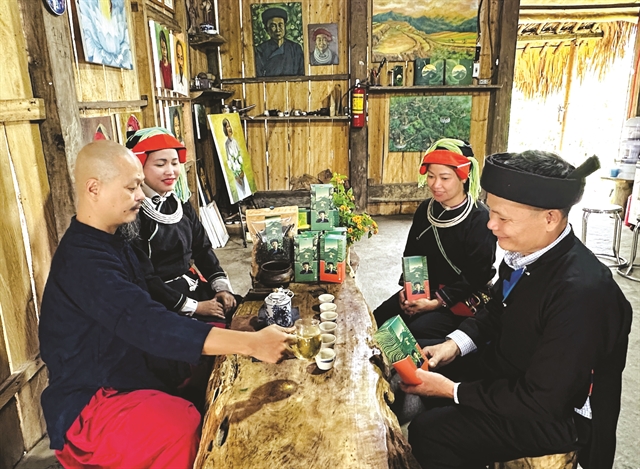
Savouring freshly pan-fired tea is a cherished cultural tradition among the Dao community in Xà Phìn Village.
Historically, Shan Tuyết tea from Xà Phìn was sold primarily in raw form, with basic packaging and prices that did not reflect its true value. A significant shift occurred in 2023 with the founding of the Trà Pèng Cooperative.
The cooperative now produces three main varieties: green, black and white tea. It supplies over one tonne of dried tea to the market annually, with prices ranging from VNĐ1.2 to 2.5 million (US$45-95) per kilogram.
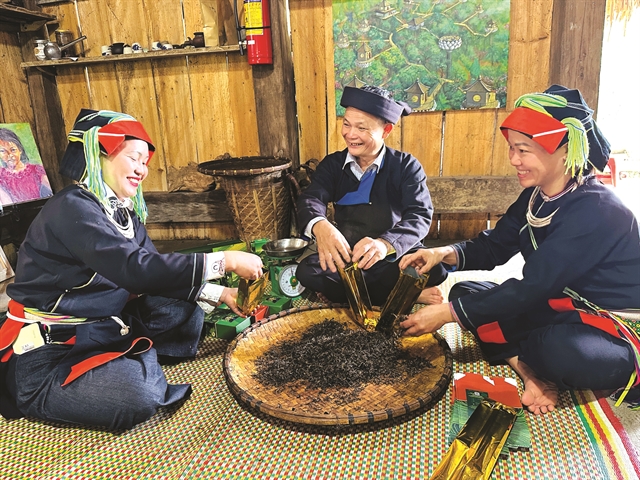
Residents of Xà Phìn Village prepare Trà Pèng tea for packaging.
Although priced above the market average, the tea remains in demand due to its origin – leaves harvested from ancient trees enriched by the natural environment.
In addition to enhancing the value of Shan Tuyết tea, the cooperative has helped improve livelihoods and foster long-term commitment to the craft.
“My family has worked with tea for generations. In the past, it sold for low prices and life was difficult. Now, through the cooperative, we have a stable market and better income. People are happy. We’ll continue to cultivate the Shan Tuyết tea trees for future generations.” Cháng Thị Thấy, a resident of Xà Phìn, said.
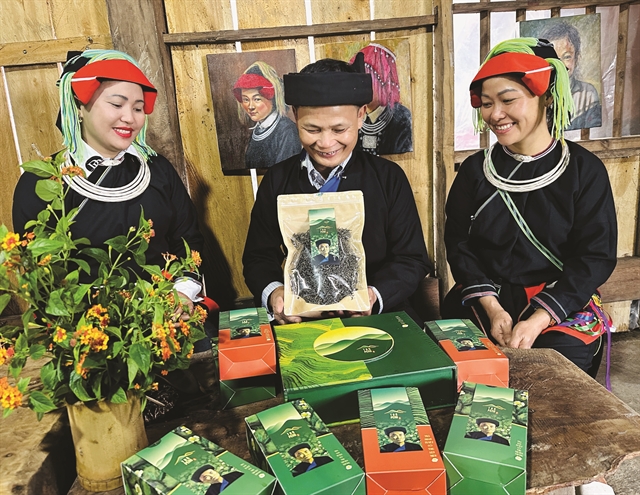
Dao ethnic man Đặng Văn Háu (centre) presents the products of Trà Pèng Cooperative.
Since the cooperative began operations, many households have been able to renovate their homes and support their children’s education. The traditional craft is not only being preserved, but is also contributing to sustainable economic growth.
The Chairman of the People’s Committee [Administration] of Thanh Thủy Commune, Lê Mạnh Dũng, said that the cooperative had successfully leveraged the potential of Shan Tuyết tea – creating employment, increasing incomes and preserving the cultural identity of the Dao community.
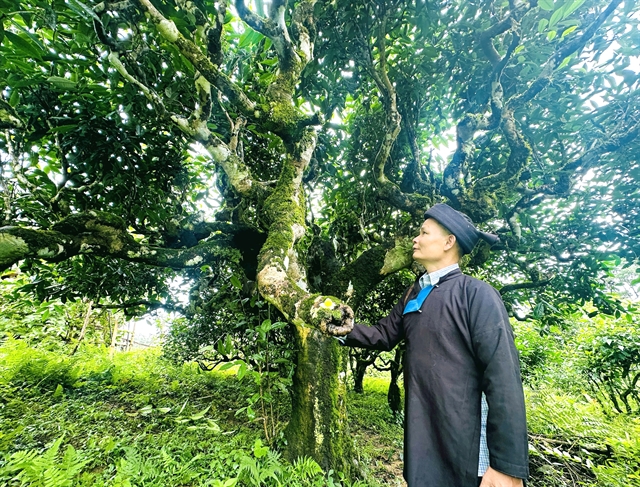
Dao ethnic man Đặng Văn Háu stands beneath the canopy of a centuries-old Shan Tuyết tea tree.
The commune plans to continue supporting the cooperative through policy initiatives, brand development and market expansion via exhibitions, promotional activities and product showcases. These efforts will be integrated with community-based tourism, aiming to raise the tea’s "One Commune, One Product" rating and pursue export opportunities. VNS